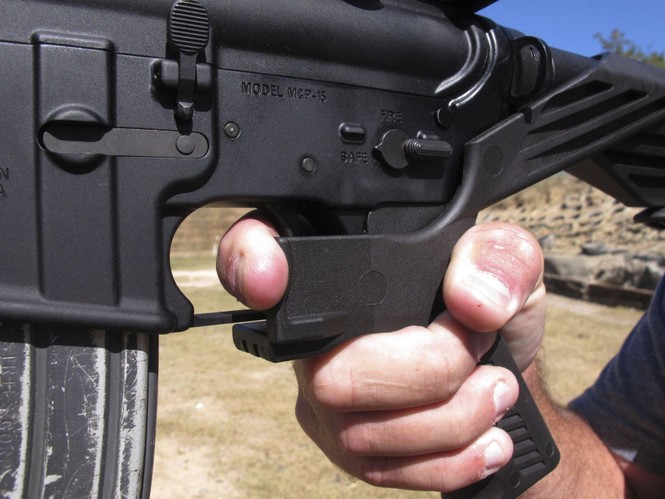The Department of Justice (DOJ) published a notice Thursday saying the Bureau of Alcohol, Tobacco, Firearms and Explosives (ATF) has begun taking public comment on the proposed bump stock ban. Here's what you should know.

The Proposed Rule Change
Should the DOJ decide to pass the bump stock ban, one major change that would take place: the term "machine gun" would be altered in the National Firearms Act of 1934 (NFA) and the Gun Control Act of 1968 (GCA). Here's the current definition:
The term “machine gun” means any weapon which shoots, is designed to shoot, or can be readily restored to shoot, automatically more than one shot, without manual reloading, by a single function of the trigger. The term shall also include the frame or receiver of any such weapon, any part designed and intended solely and exclusively, or combination of parts designed and intended, for use in converting a weapon into a machine gun, and any combination of parts from which a machinegun can be assembled if such parts are in the possession or under the control of a person.
The new definition would be expanded to include:
The term “machine gun” includes bump-stock-type devices, i.e., devices that allow a semiautomatic firearm to shoot more than one shot with a single pull of the trigger by harnessing the recoil energy of the semiautomatic firearm to which it is affixed so that the trigger resets and continues firing without additional physical manipulation of the trigger by the shooter.
According to the DOJ's summary, bump-stock-style devices weren't included in the GCA because they weren't around when the gun control law was implemented. If the Notice of Proposed Rulemaking (NPRM) goes through, these devices would fall under the same regulations as machine guns.
"Consequently, current possessors of these devices would be required to surrender them, destroy them, or otherwise render them permanently inoperable upon the effective date of the final rule," the summary states.
Recommended

Who Will Be Affected?
The DOJ says manufacturers, retailers, and gun owners would be negatively affected by the proposed rule. Their table breaks down who would be impacted as well as the costs associated with implementing the proposed rule:

The numbers the DOJ has come up with for this proposal are based on estimates because there are no records of those who have purchased bump stocks. Estimates are based on manufacturer reports.

What Is the Associated Cost?
The ATF believes it would cost just shy of $1.8 million in 2018 to destroy all existing bump stocks. The cost includes the following components:
There are three primary sources of costs from this rule. First, for owners of bump-stock-type devices, there will be a lost value from no longer being able to possess or use the devices. Second, there will be a lost value to manufacturers who would have manufactured and sold the devices in the future and to gun owners who would have purchased them. Finally, there is a disposal cost associated with the need to destroy the devices or render them inactive.
The ATF estimates it would cost $297.2 million over the next 10 years to implement the rule, should it become law.

Submitting Comments
Written comments must be postmarked and electronic comments must be submitted by June 27, 2018. The online system will not accept anything after midnight EST on June 27th.
All letters must include the agency name (ATF) and the following docket number: ATTN: 2017R-22.
To submit an online comment, click here.
Written comments can be submitted via snail mail to:
Vivian Chu
Mailstop 6N-518
Office of Regulatory Affairs
Enforcement Programs and Services
Bureau of Alcohol, Tobacco, Firearms, and Explosives
99 New York Ave NE
Washington, D.C. 20226
Anyone with questions is encouraged to call Vivian Chu at (202) 648-7070.


